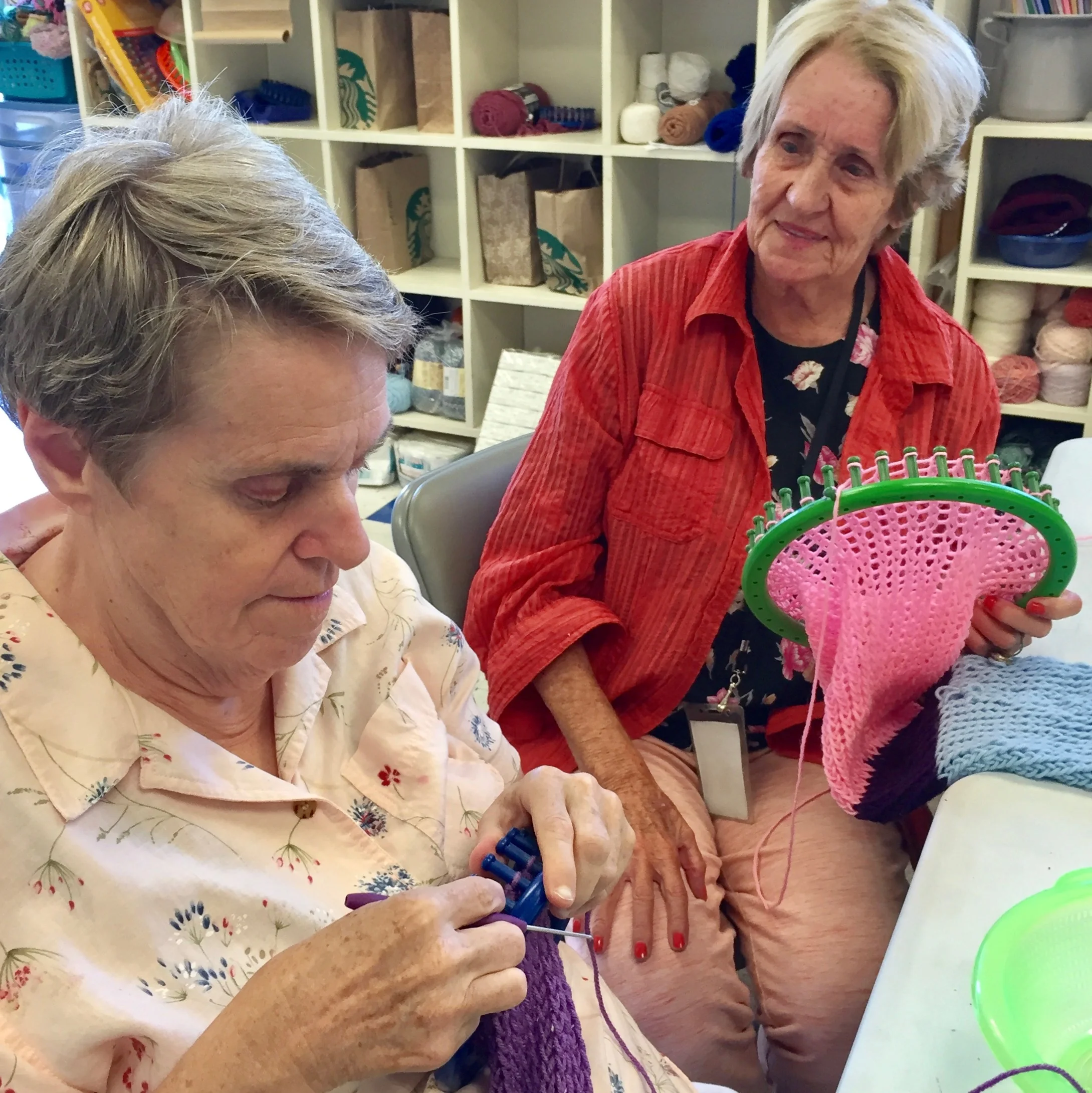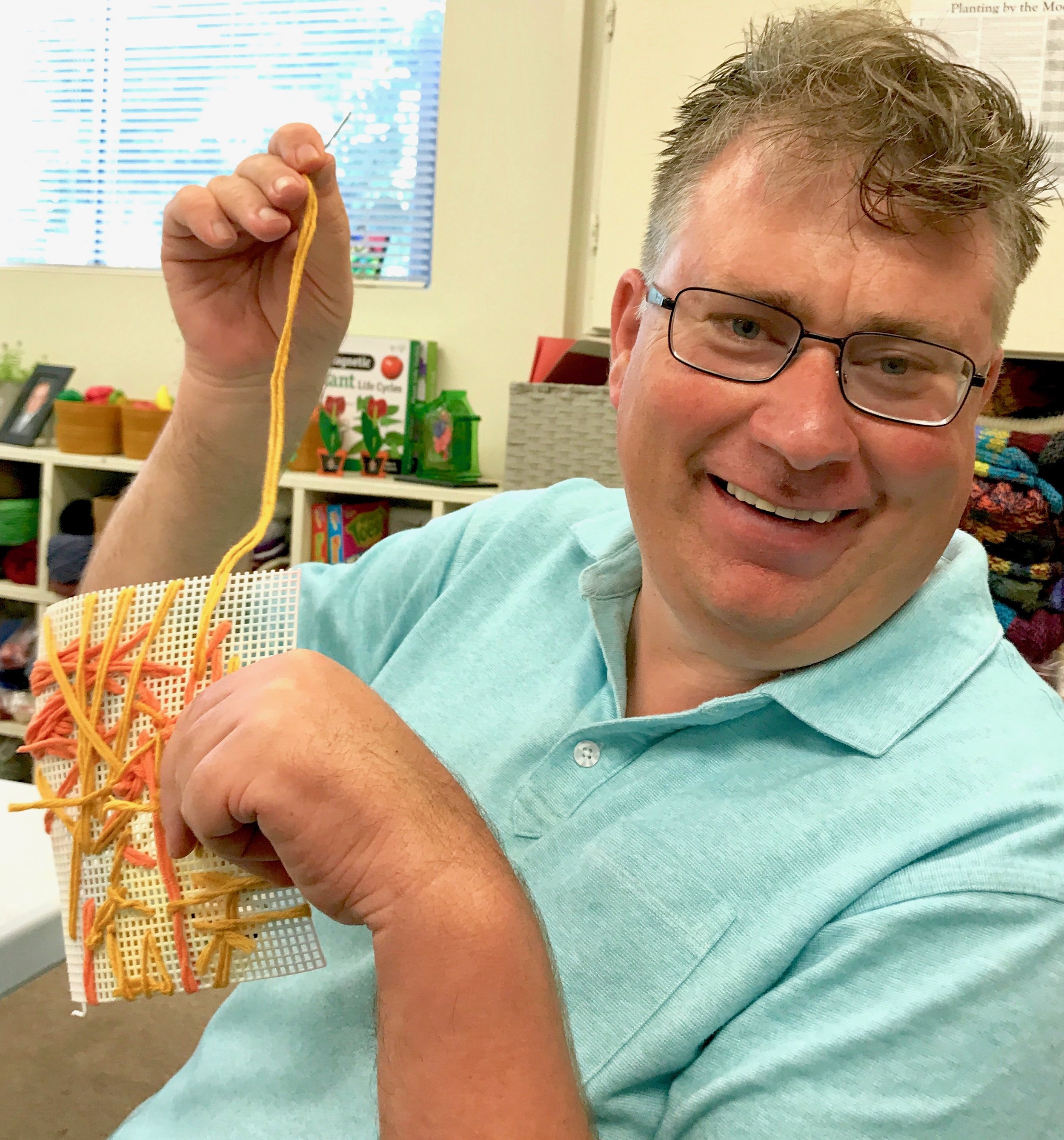There are many fiber arts options available to fit the needs of your participants. Social issues can be addressed in a fiber arts circle or working together on a weaving or quilting project. Projects can be tailored to fit a disability, limitation, injury or other need. Memory, focus and sharpness can be addressed as well as fine motor skills and hand eye coordination.
Making choices, decision making and ownership are inherent in the fiber arts. Tactile and visual exploration come into play on a project with color and texture options. A sense of community can be fostered with the integration of the person or group with others who do not have a disability or diagnosis, doing something 'normal' or typical can be self affirming. Social and emotional arts are practiced and encouraged at the fiber arts table.
Knitting can be done on two needles, with a variety of loom styles or even on the fingers or arms. Crochet is done with a hook that can be modified for grip differences. Weaving is very accessible in that looms can be a large as a room or as small as a postage stamp and very portable as well. Nalebinding was used by the Vikings and is done with a large eyed needle and is a series of knots created usually around the thumb. Kumohimo is an ancient Japanese way of creating cord, this can be strung with beads before or after working. Macrame can be simple or complex depending on the participants ability.
There are a wide variety of items that can be created via the fiber arts to fit the participants needs and abilities. Simple to complex, bold to gentle it can all be included in a Therapeutic fiber arts program.


